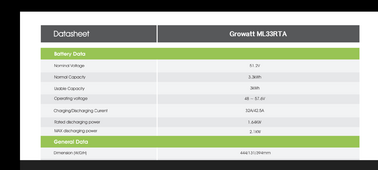So while trying to understand my system I asked my vendor why my system wasn’t charging /discharging at its rated capacity
System Growatt SPH3000 inverter. 3.3kWh Ml33RTA battery
Inverter should discharge at 3kW. Batteries should charge at the same rate from the grid.
But they don’t.
The battery only seems to charge at 2.16 kW.
When I queried this my vendor said the batteries can only charge at full rate when between 20 and 40c .
They are LiFePO (LFP?) batteries
Is this real or just designed to confuse me?
Is there really a temp limit in charging/discharging?
I know there’s a lower limit of don’t charge below 0c but 20c to restrict charge rate?
My batteries are in an unheated space (attic) it’s 10-15c this time of year, but I’d guess the “self heating” of the batteries would put it above the surroundings?
Can anyone help?
System Growatt SPH3000 inverter. 3.3kWh Ml33RTA battery
Inverter should discharge at 3kW. Batteries should charge at the same rate from the grid.
But they don’t.
The battery only seems to charge at 2.16 kW.
When I queried this my vendor said the batteries can only charge at full rate when between 20 and 40c .
They are LiFePO (LFP?) batteries
Is this real or just designed to confuse me?
Is there really a temp limit in charging/discharging?
I know there’s a lower limit of don’t charge below 0c but 20c to restrict charge rate?
My batteries are in an unheated space (attic) it’s 10-15c this time of year, but I’d guess the “self heating” of the batteries would put it above the surroundings?
Can anyone help?





